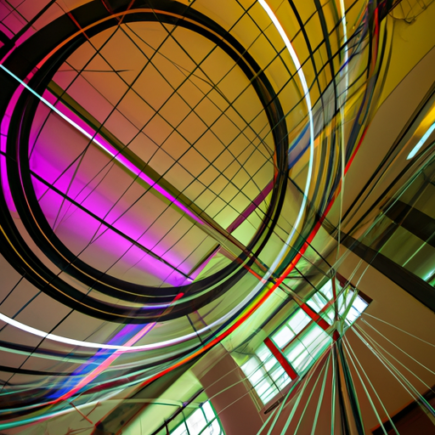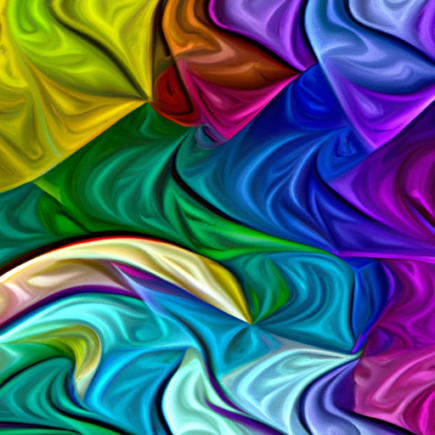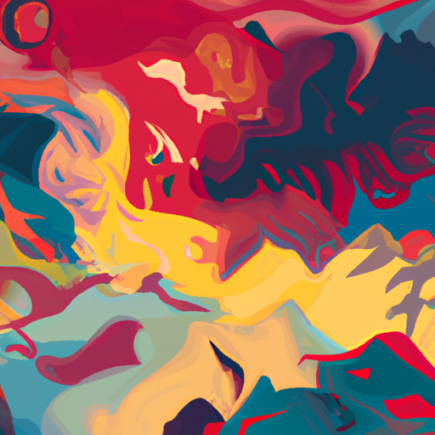i komunikuje się z widzem. To subtelne elementy, które wzbogacają dzieło i nadają mu głębię emocjonalną. Bezkształtna sztuka otwiera przed nami szerokie pole do eksploracji i doświadczania różnorodnych uczuć, przekraczając granice rzeczywistości i pobudzając naszą wyobraźnię. Wszystko to sprawia, że badanie emocji w bezkształtnej sztuce staje się fascynującym i osobistym doświadczeniem, które warto poznać i eksplorować.
Demystifying conceptual art: Understanding its key principles and interpretations
key principles of conceptual art is the idea or concept behind the artwork, rather than the physical object itself. This shift in focus gave birth to artworks that often relied on text, language, and instructions to convey their meaning. Influential figures such as Marcel Duchamp and Sol LeWitt played a significant role in the development of conceptual art, challenging traditional notions of artistic skill and craftsmanship. Conceptual art also emerged as a response to the commercialization of the art world, aiming to challenge the commodification of art and redefine the relationship between art, the artist, and the viewer. Overall, the origins of conceptual art can be traced back to avant-garde movements of the early 20th century and continue to push boundaries in the art world today.
Conceptual art: An in-depth exploration of its origins and impact
The birth of conceptual art marked a significant shift in the world of contemporary art, challenging traditional notions of what constitutes a work of art and revolutionizing artists’ creative practices. The movement prioritized the idea or concept behind the artwork, often making the physical object secondary. The origins of conceptual art can be traced back to precursors such as the Dada and Fluxus movements, which rejected traditional aesthetic values and emphasized the importance of concept and intention in art. Artists like Marcel Duchamp and his ready-mades further paved the way for conceptual art by challenging the role of the artist and the nature of art itself. The evolution of conceptual art was propelled by influential figures such as Sol LeWitt, Lawrence Weiner, and Joseph Kosuth, who emphasized the importance of ideas and language in the creative process. Conceptual art continues to inspire and provoke new ways of thinking about art, challenging traditional boundaries and expanding the definition of the medium.
Niezwykłe zastosowania abstrahowania: Analiza i zrozumienie tego, co nieoczywiste
tego narzędzia w sztuce i projektowaniu. Abstrahowanie pozwala na wydobycie esencji i skupienie się na najważniejszych elementach, co prowadzi do tworzenia oryginalnych dzieł i innowacyjnych rozwiązań. Dla artystów oznacza to możliwość wyrażenia emocji i idei w sposób unikalny i ekspresyjny, podczas gdy projektanci mogą projektować interfejsy użytkownika bardziej intuicyjne i funkcjonalne. Abstrahowanie jest niezastąpione w tych dziedzinach i umożliwia tworzenie dzieł, które inspirują, zaskakują i angażują odbiorców. Jeśli chcesz dowiedzieć się więcej o tym fascynującym narzędziu i jego zastosowaniach, koniecznie przeczytaj cały artykuł!
Abstract w sztuce: Odkrywając piękno poza granicami konkretności
pędzle, kredki czy też techniki cyfrowe, aby wyrazić swoje emocje i tworzyć unikalne dzieła sztuki. Eksplorując świat abstrakcji artystycznej, możemy doświadczyć głębszych poziomów naszego własnego świadomości, rozwijać naszą wrażliwość estetyczną oraz otworzyć się na nowe i unikalne sposoby wyrażania i doświadczania emocji.
Notion: Przewodnik po funkcjach i wskazówki użytkowania tego popularnego narzędzia
i udostępniać notatki. To ułatwia pracę zespołową i umożliwia lepszą komunikację. Dodatkowo, Notion oferuje możliwość udostępniania dokumentów publicznie, co pozwala nam dzielić się naszymi projektami i wiedzą z szerszą społecznością. Dzięki integracji z innymi narzędziami, takimi jak kalendarz Google czy automatyczne powiadomienia, Notion staje się jeszcze bardziej użytecznym narzędziem. Warto poświęcić trochę czasu na naukę i eksperymentowanie, aby wykorzystać w pełni potencjał Notion.
Notion: Wszechstronne narzędzie do organizacji i efektywnej pracy
Notion to wszechstronne narzędzie, które pomaga w organizacji pracy oraz zwiększeniu efektywności. Jednym z kluczowych aspektów Notion jest jego elastyczność, umożliwiająca dostosowanie platformy do indywidualnych potrzeb i preferencji. Oferuje wiele funkcji, takich jak tworzenie notatek, kalendarzy, zadań czy baz danych, które sprawiają, że Notion może być wykorzystywany zarówno do zarządzania projektami, jak i do organizacji codziennych obowiązków. Dodatkowymi zaletami Notion są możliwość tworzenia relacji między różnymi elementami oraz tworzenia spersonalizowanych szablonów. Prosta obsługa, przyjazny interfejs i mobilna aplikacja sprawiają, że Notion jest łatwo dostępny i wygodny w użytkowaniu. Nie tylko pomaga w organizacji pracy, ale również wspomaga efektywność, zwiększając produktywność i usprawniając procesy pracy w zespołach.
Essence: Tajemnice pielęgnacji skóry odkryte przez ekspertów
przed utratą wody, co przekłada się na jej zdrowy wygląd i elastyczność. Ponadto, Essence zawiera często składniki takie jak kwas hialuronowy, witaminy i antyoksydanty, które wspomagają regenerację skóry, redukując widoczność drobnych zmarszczek i poprawiając jej koloryt. Essence można również stosować w celu ułatwienia absorpcji innych produktów do pielęgnacji skóry, co zwiększa ich skuteczność. Podsumowując, Essence jest wartościowym odkryciem, które może odmienić naszą rutynę pielęgnacyjną i przyczynić się do zdrowszej i piękniejszej skóry.
Essence: Rewolucyjna linia kosmetyków, która odmienia twój wygląd
może łatwo dotrzeć do produktów Essence i cieszyć się ich zaletami. Dzięki temu, marka zdobyła szerokie grono fanek na całym świecie, które nie tylko doceniają jakość i przystępne ceny kosmetyków, ale także podzielają filozofię marki, skoncentrowaną na naturalnym pięknie i przyjaznym podejściu do zwierząt i środowiska. Jeśli poszukujesz linii kosmetyków, która przyniesie rewolucję w Twoim wyglądzie i samopoczuciu, Essence jest marką, którą warto wypróbować.
Unraveling Abstraction: A Comprehensive Guide to its Meaning and Impact
Understanding the essence of abstraction is crucial for unraveling its meaning and impact. It is the process of reducing complex ideas or concepts into simplified representations, used in various fields such as art, mathematics, computer science, and philosophy. Abstraction allows us to distill the essential qualities of a subject matter, enabling us to analyze, communicate, and manipulate complex systems effectively. In art, abstraction involves creating representations that depart from realistic depictions, stimulating viewers’ imagination and emotions. In mathematics, abstraction establishes the foundations of concepts and allows for the development of advanced theories. Abstraction is also fundamental in computer science, enabling the creation of modular and scalable software systems. In philosophy, abstraction is used to analyze complex concepts and uncover fundamental truths. Understanding the essence of abstraction allows us to appreciate its profound impact in various domains and navigate complexities with clarity and understanding.












